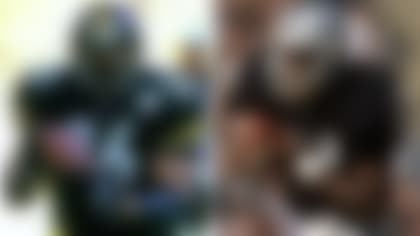NFL Photos | NFL Photography Gallery | NFL.com
Non-QBs drafted No. 1 overall in modern era power rankings
Recently, we ranked the quarterbacks selected No. 1 overall in the NFL draft's modern era (since 1967). This time, we rank the 28 non-quarterbacks taken with the No. 1 overall draft choice, starting with a recent top pick whose early career trajectory hasn't been too promising.

Year: 2014
College: South Carolina
Who went No. 2? Greg Robinson, OT, St. Louis Rams (Auburn)
Most notable player(s) from draft: Odell Beckham was the No. 12 overall pick in the first round by the New York Giants. Beckham's knack for the amazing made him an instant NFL star and landed the receiver on the cover of Madden NFL 2016.
Clowney has ample time to redeem himself, but the early returns are less than promising. Clowney already has a dubious place among defensive players taken No. 1 overall in the NFL draft. Of the nine defensive players selected No. 1 since sacks became an official statistic, Clowney is the only one who failed to record a sack as a rookie.
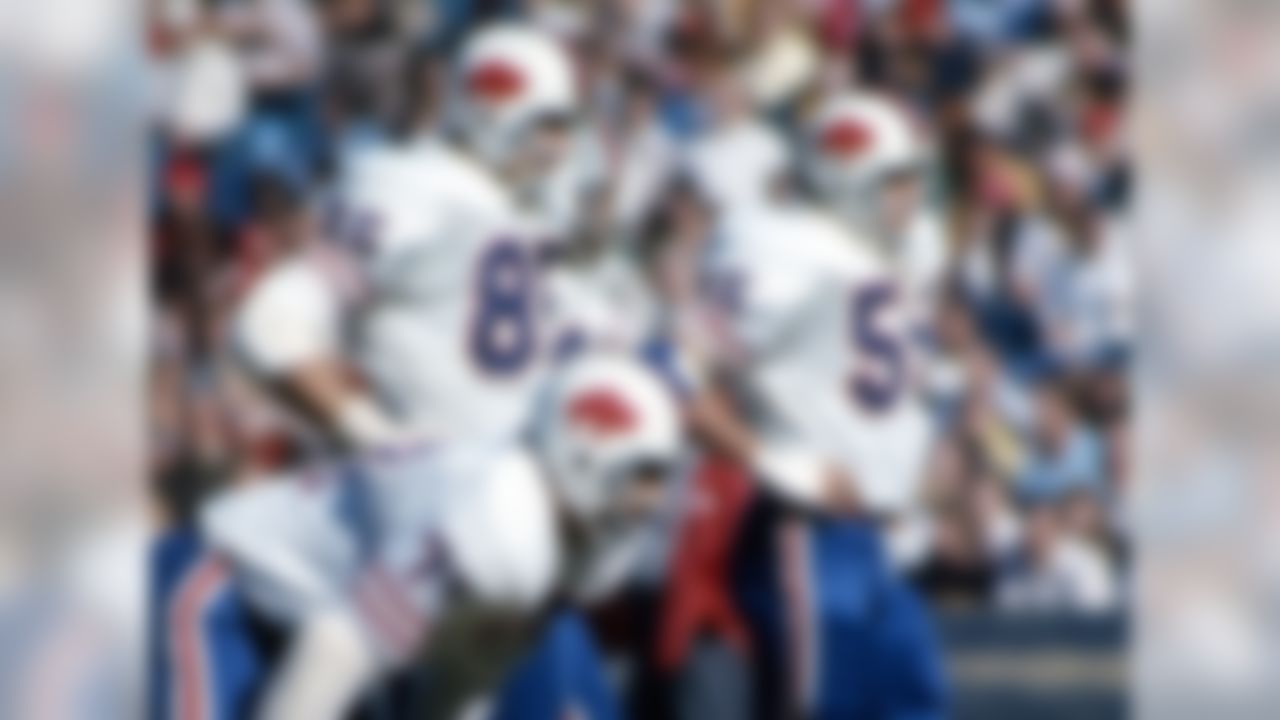
Year: 1972
College: Notre Dame
Who went No. 2? Sherman White, DE, Cincinnati Bengals (California)
Most notable player(s) from draft: Franco Harris was the No. 13 overall selection, going to the Pittsburgh Steelers. Harris is the only Pro Football Hall of Famer selected in 1972.
Patulski is the last Notre Dame player to be selected No. 1 overall in the NFL draft. Patulski is among the greatest disappointments among all No. 1 overall picks, lasting just four seasons with the Bills.
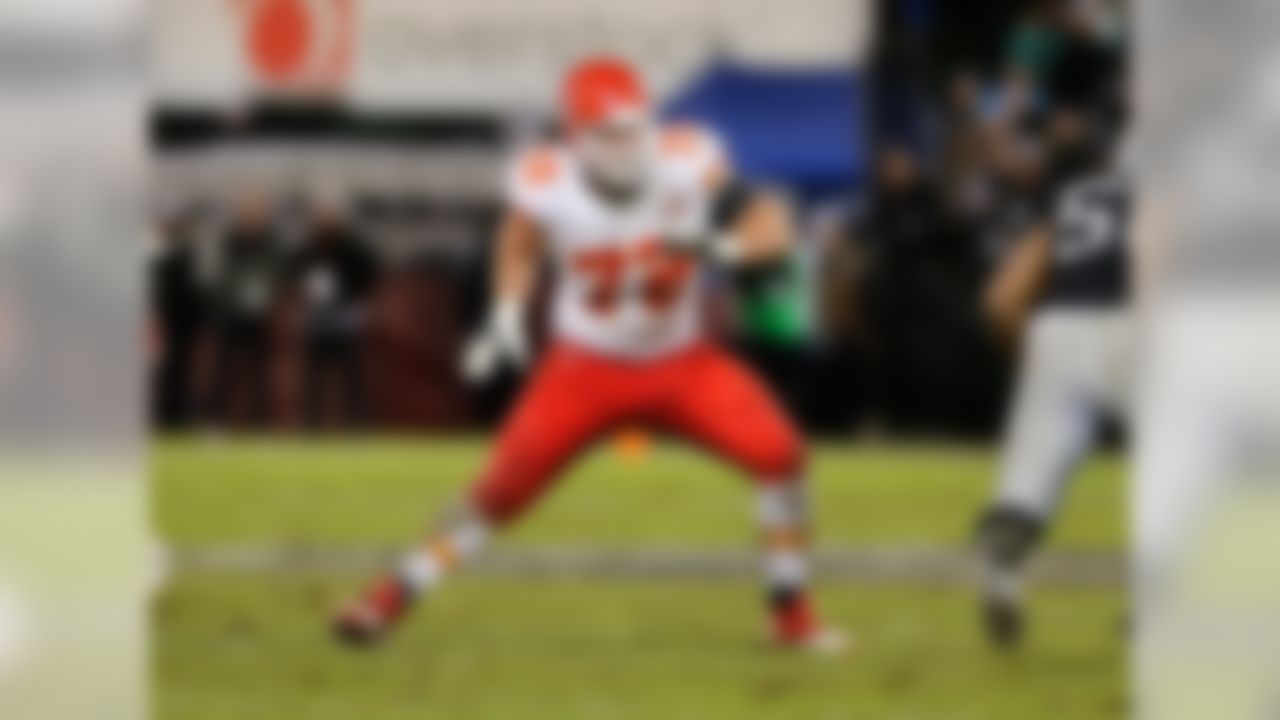
Year: 2013
College: Central Michigan
Who went No. 2? Luke Joeckel, OT, Jacksonville Jaguars (Texas A&M)
Most notable player(s) from draft: Kyle Long was taken with the No. 20 overall pick in the first round by the Chicago Bears, and has been a Pro Bowl pick in each of his two NFL seasons.
The 2013 draft class is on the fast track toward being recognized as one of the worst in NFL history. Fisher, and Joeckel, have yet to establish themselves as dependable starting offensive tackles. Fisher has started all but three games in his career, but is entering a critical season as he tries to develop into the elite offensive tackle Kansas City envisioned when he was taken No. 1.
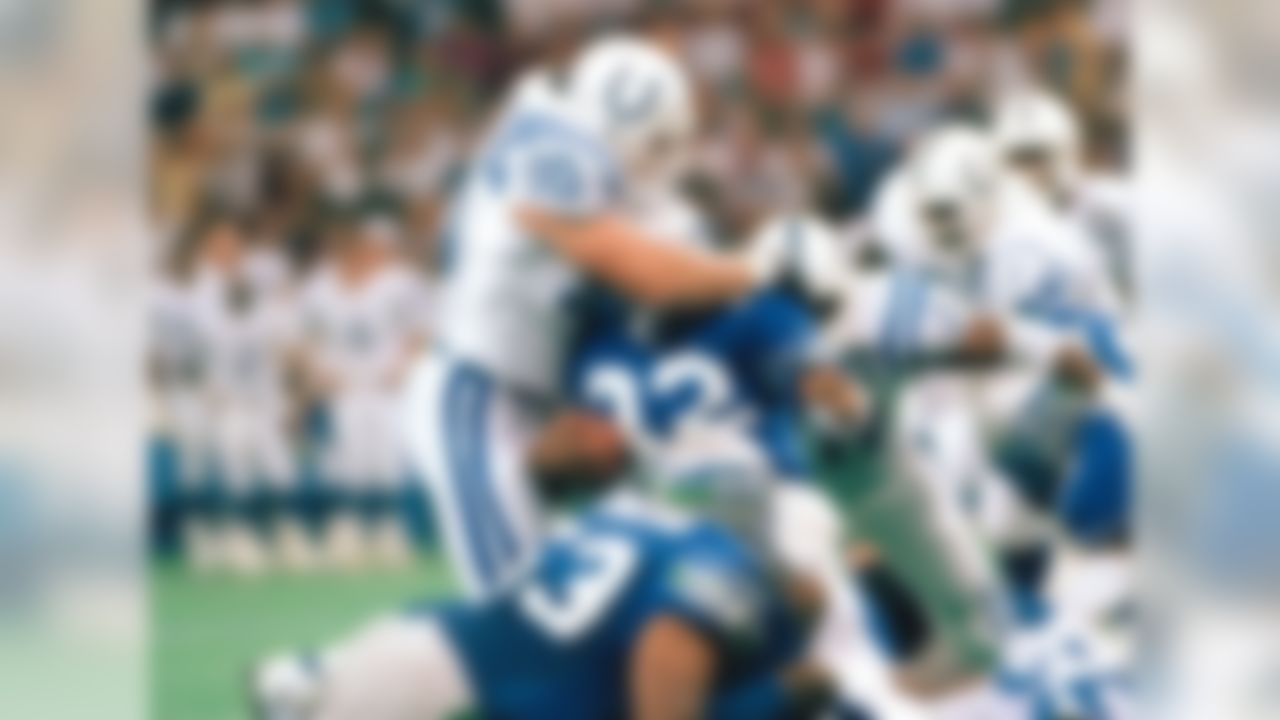
Year: 1992
College: Washington
Who went No. 2? Quentin Coryatt, LB, Indianapolis Colts (Texas A&M)
Most notable player(s) from draft: Darren Woodson was a second-round pick (No. 37 overall) by the Dallas Cowboys and was a key contributor on three Super Bowl-winning teams.
This was the worst overall draft class of the past quarter century. Emtman's situation was an unfortunate one, as his brief NFL career was riddled by devastating knee injuries suffered on the Hoosier Dome's Astroturf. Emtman started just 19 games over six seasons and never lived up to the promise that made him the top pick.
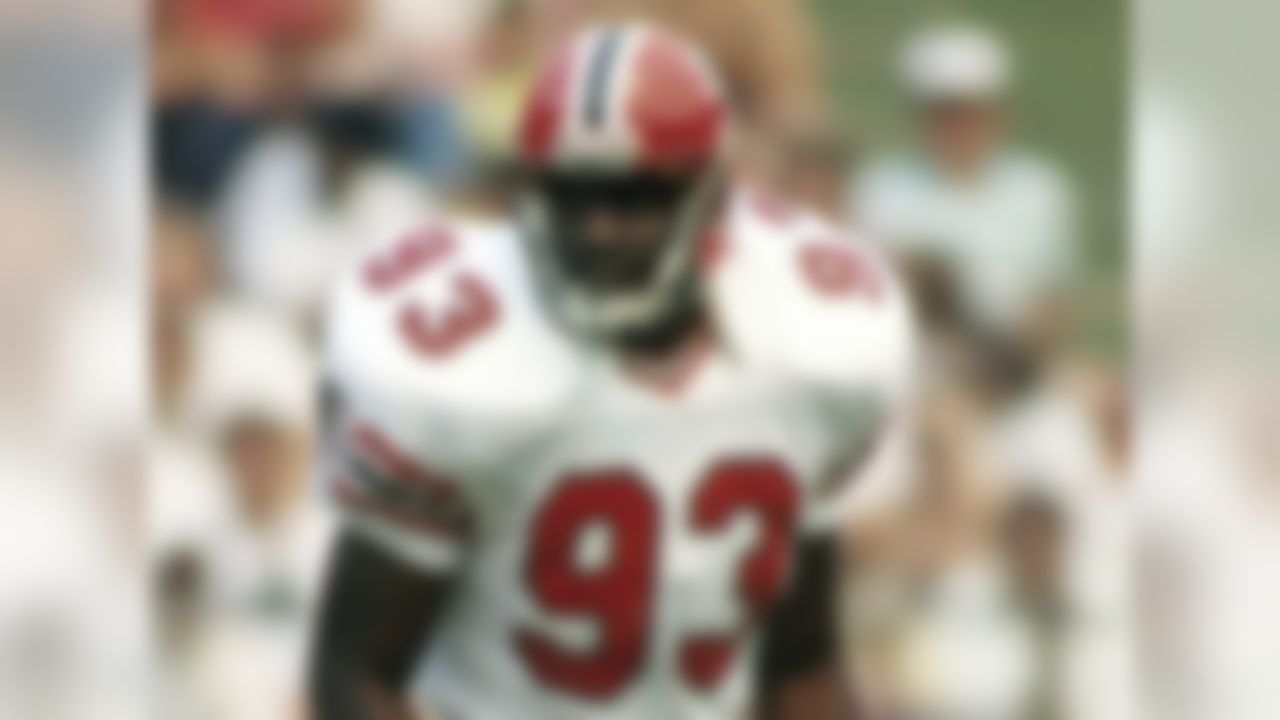
Year: 1988
College: Auburn
Who went No. 2? Neil Smith, DE, Kansas City Chiefs (Nebraska)
Most notable player(s) from draft: Five future members of the Pro Football Hall of Fame were selected in the 1988 draft: Tim Brown (No. 6 overall to the Los Angeles Raiders), Michael Irvin (No. 11 overall to the Dallas Cowboys), Randall McDaniel (No. 19 overall to the Minnesota Vikings), Thurman Thomas (No. 40 overall to the Buffalo Bills) and Dermontti Dawson (No. 44 overall to the Pittsburgh Steelers).
Bruce did last 11 seasons in the NFL, but mostly in a reserve role (he started just 41 games ... 29 came in his first two seasons). In an attempt to siphon more production out of Bruce, the Falcons experimented with a switch to tight end. He caught one pass for 11 yards.
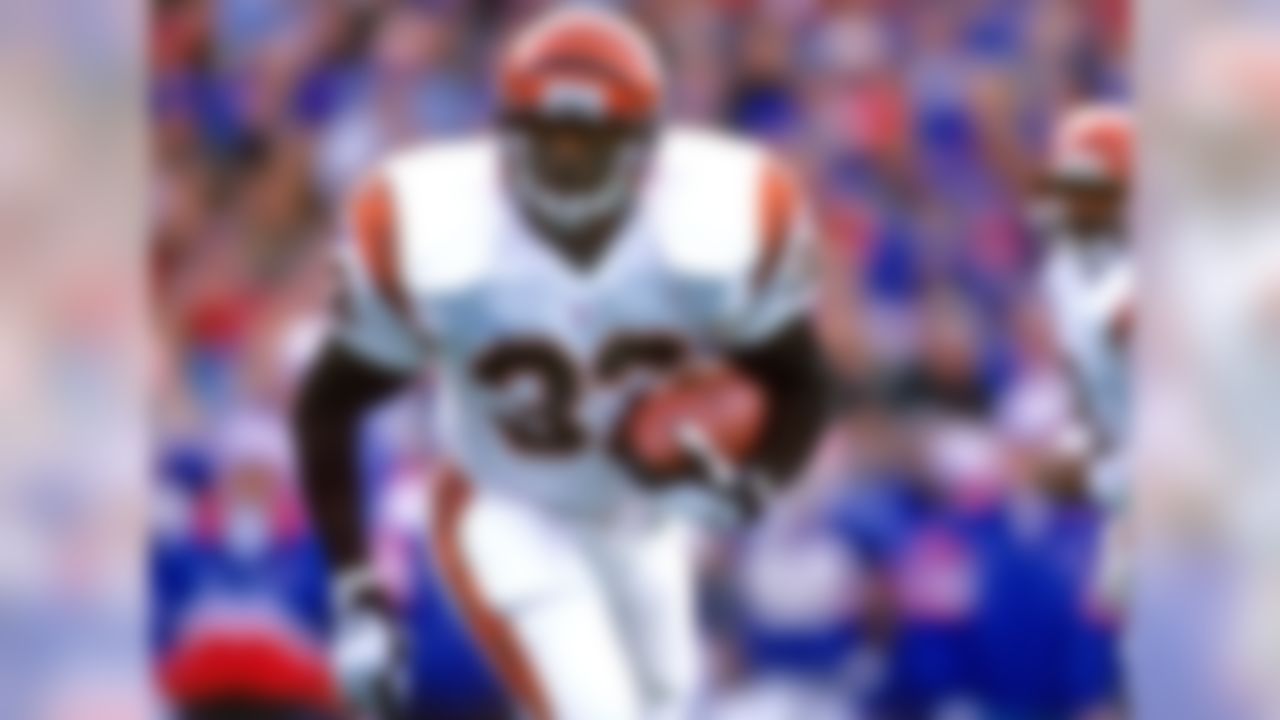
Year: 1995
College: Penn State
Who went No. 2? Tony Boselli, OT, Jacksonville Jaguars (USC)
Most notable player(s) from draft: Three future Pro Football Hall of Famers were selected in the 1995 draft, including two by the Tampa Bay Buccaneers -- Warren Sapp at No. 12 overall and Derrick Brooks at No. 28 overall. In the third round, the New England Patriots drafted Curtis Martin.
The Bengals acquired the No. 1 overall selection from the expansion Carolina Panthers. On his third carry in the first preseason game of 1995, Carter tore a knee ligament and was forced to miss his entire rookie season. That unfortunate event set the tone for an injury-ravaged career. In seven seasons, Carter started 14 games and rushed for 1,144 yards and 20 touchdowns.
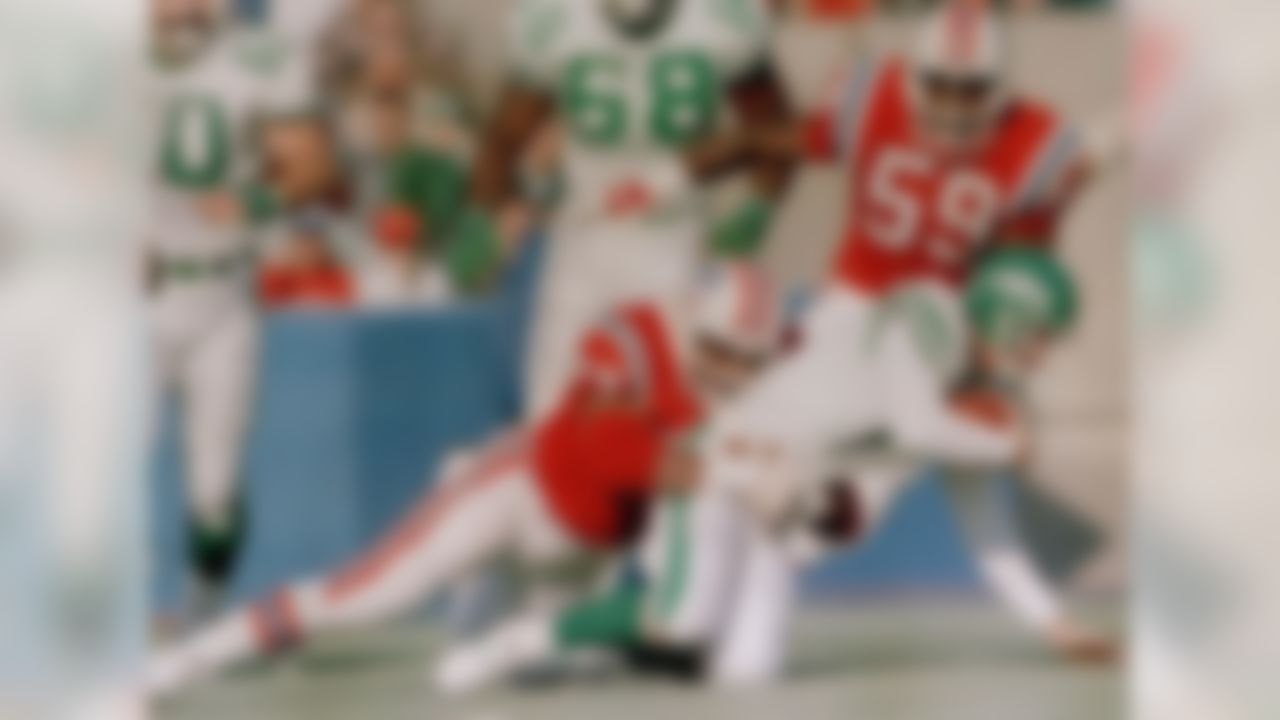
Year: 1982
College: Texas
Who went No. 2? Johnie Cooks, LB, Baltimore Colts
Most notable player(s) from draft: Three future Pro Football Hall of Famers were selected in the 1982 draft: Mike Munchak (No. 8 overall by the Houston Oilers), Marcus Allen (No. 10 overall to the Oakland Raiders) and Andre Tippett (No. 41 overall to the New England Patriots).
Sims played eight seasons in the NFL, all for the Patriots, and was a member of the team that advanced to Super Bowl XX. However, with just 17 sacks over those eight years, Sims never lived up to the immense expectations that come with being the No. 1 overall selection in a draft.
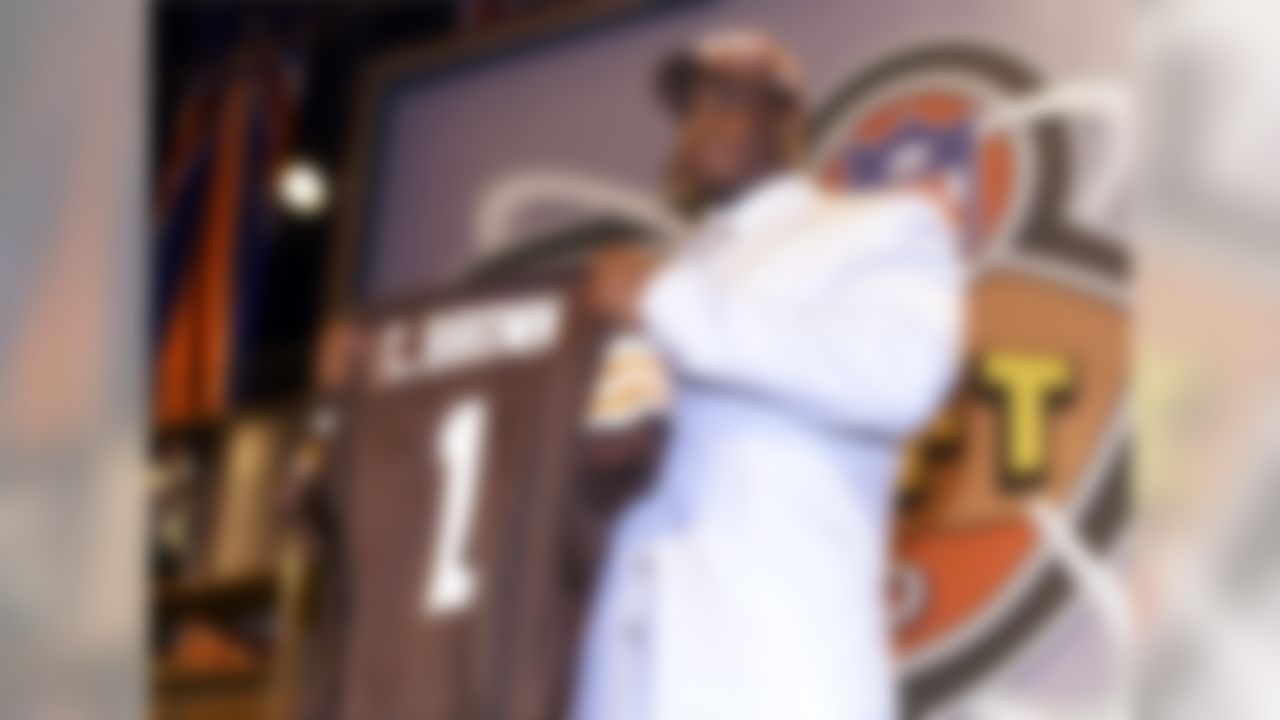
Year: 2000
College: Penn State
Who went No. 2? LaVar Arrington, LB, Washington Redskins (Penn State)
Most notable player(s) from draft: Tom Brady fell to pick No. 199 in the sixth round to the New England Patriots, but seems to have done alright since then.
This is a painful draft to recall for Browns fans. Sixteen selections before the Patriots took Brady, the Browns drafted a quarterback. That player was Spergon Wynn, who played just two NFL seasons. Brown was a dominant college player, and seemed to be a slam dunk selection for the Browns, who drafted the player they hoped to be the team's quarterback for many years at No. 1 the year earlier -- Tim Couch. Brown started all 16 games as a rookie, but was an on-again, off-again injury risk the rest of his six-year career.
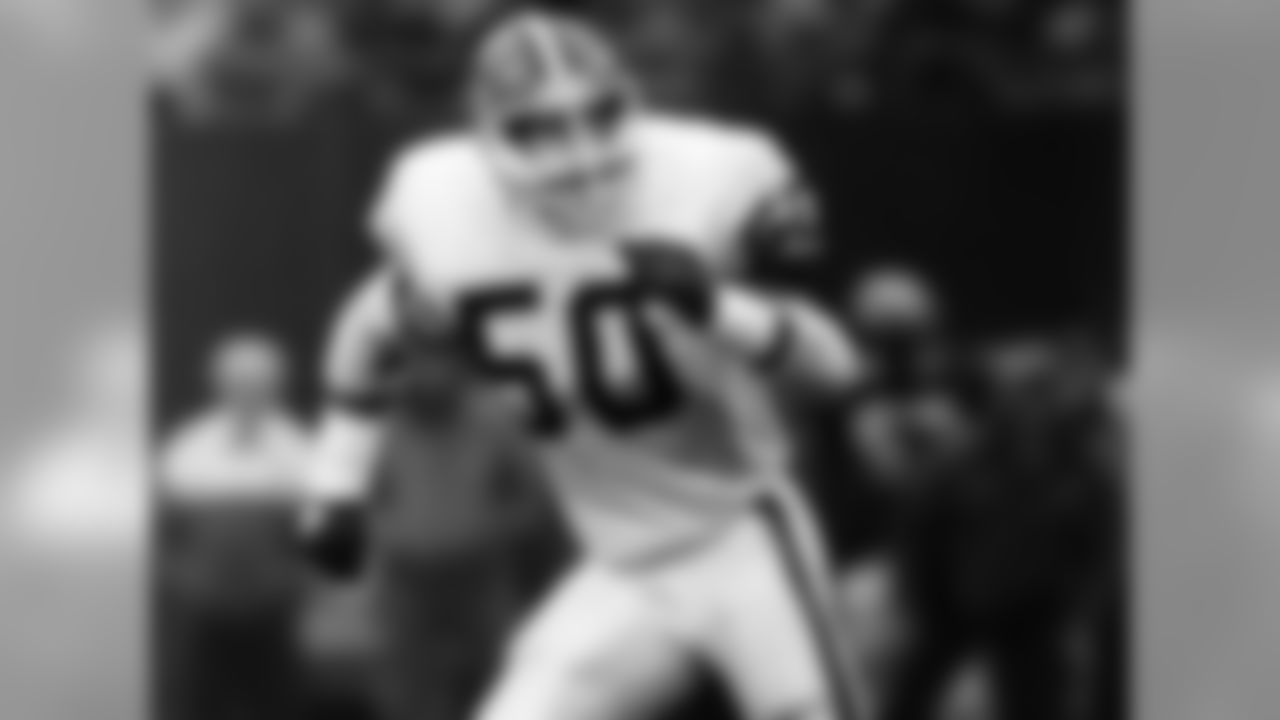
Year: 1979
College: Ohio State
Who went No. 2? Mike Bell, DE, Kansas City Chiefs (Colorado State)
Most notable player(s) from draft: Joe Montana -- winner of four Super Bowls and MVP of three of those triumphs -- was drafted in the third round (No. 82 overall) by the San Francisco 49ers.
Cousineau never played for the Bills, opting instead to play for the Canadian Football League's Montreal Alouettes. When Cousineau decided to return to the NFL, the Bills traded him to the Cleveland Browns. An interesting side note to Cousineau's career is his place in the draft. The Bills picked Cousineau with a selection acquired from the 49ers in a trade for O.J. Simpson. The Bills then drafted Jim Kelly with the pick acquired from the Browns in 1982.
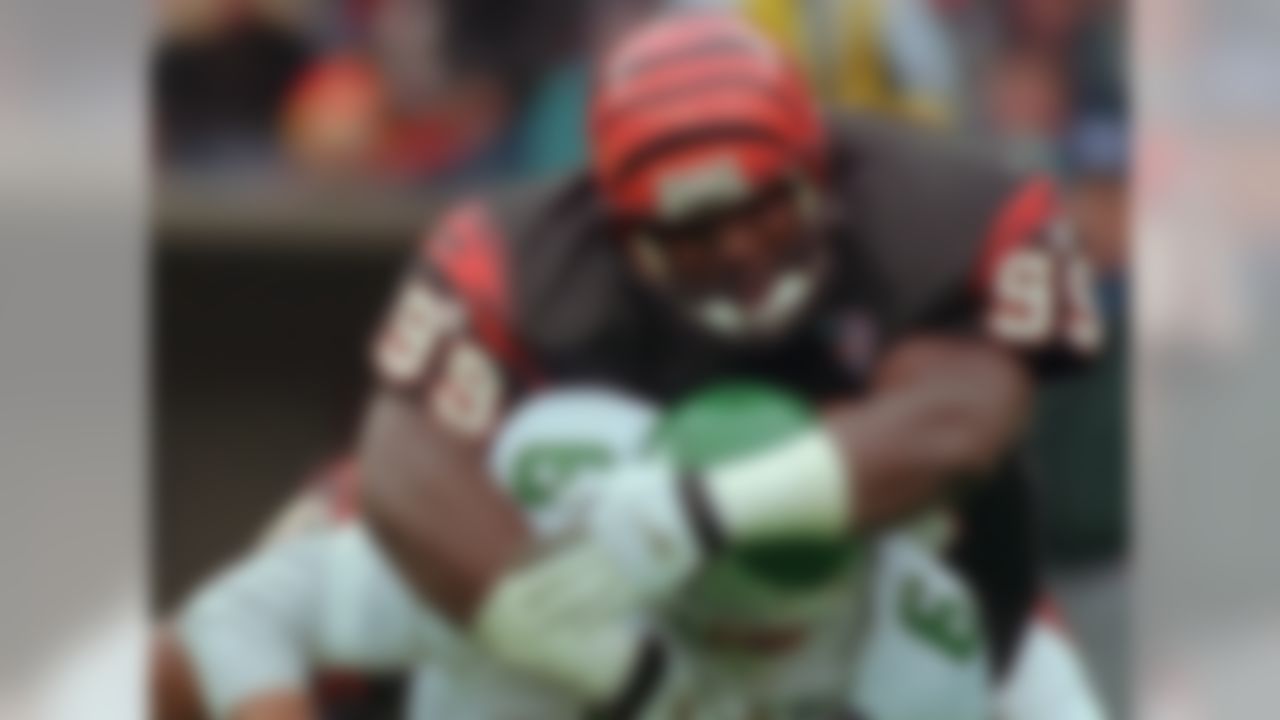
Year: 1994
College: Ohio State
Who went No. 2? Marshall Faulk, RB, Indianapolis Colts (San Diego State)
Most notable player(s) from draft: Faulk was one of two future Hall of Famers taken in this draft. The other was Larry Allen, who was selected by the Dallas Cowboys in the second round (No. 46 overall).
Leading up to the 1994 draft, "Big Daddy" Wilkinson drew comparisons to Reggie White and Cortez Kennedy -- two current Hall of Fame members. While Wilkinson didn't live up to that monumental hype, he did have a productive career that spanned 12 seasons with four different teams. He posted eight sacks in 1995, then matched that career-high during a 1999 season spent with the Washington Redskins that also included an 88-yard pick six.
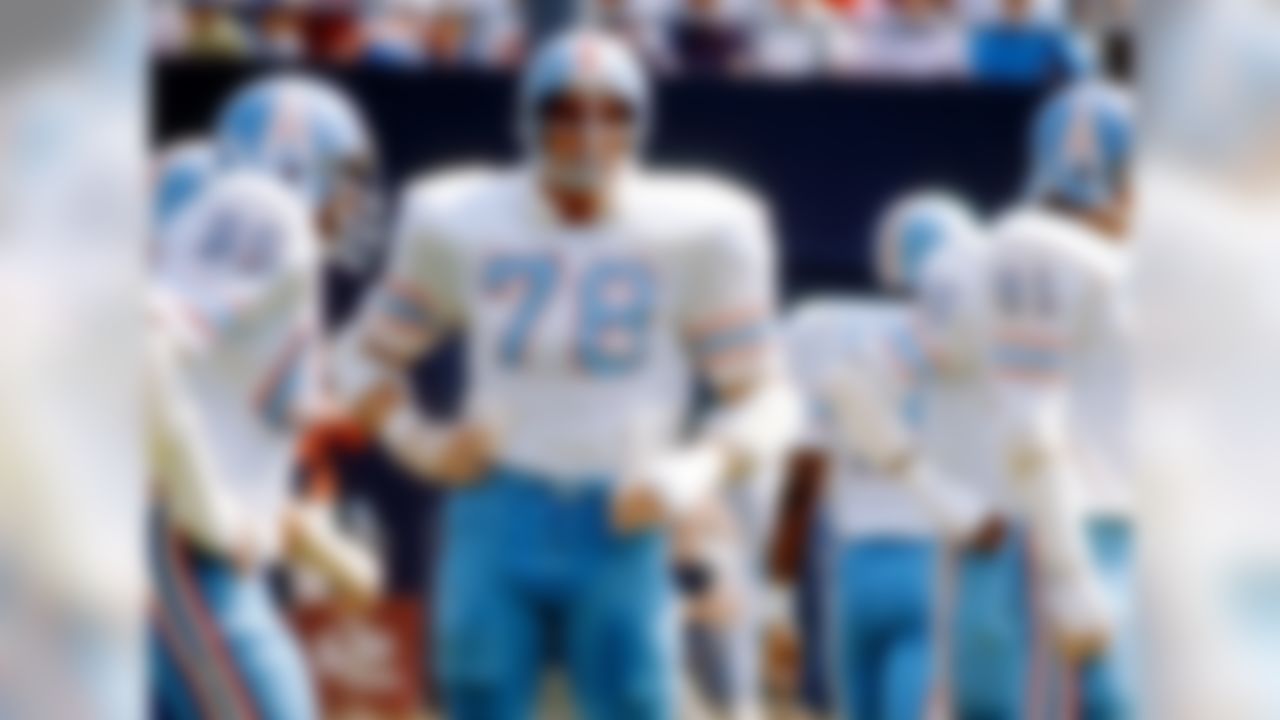
Year: 1973
College: Tampa
Who went No. 2? Bert Jones, QB, Baltimore Colts (LSU)
Most notable player(s) from draft: John Hannah went No. 4 overall to the New England Patriots and went on to become one of the NFL's all-time great offensive linemen.
Matuszak was one of many renegade outcasts the Raiders welcomed with open arms back in the day, and he was a contributor for the Raiders in victories in Super Bowls XI and XV. Matuszak's football career is often a side note to the other aspects of his life, notably his acting career. He is frequently recalled as Sloth from "The Goonies."
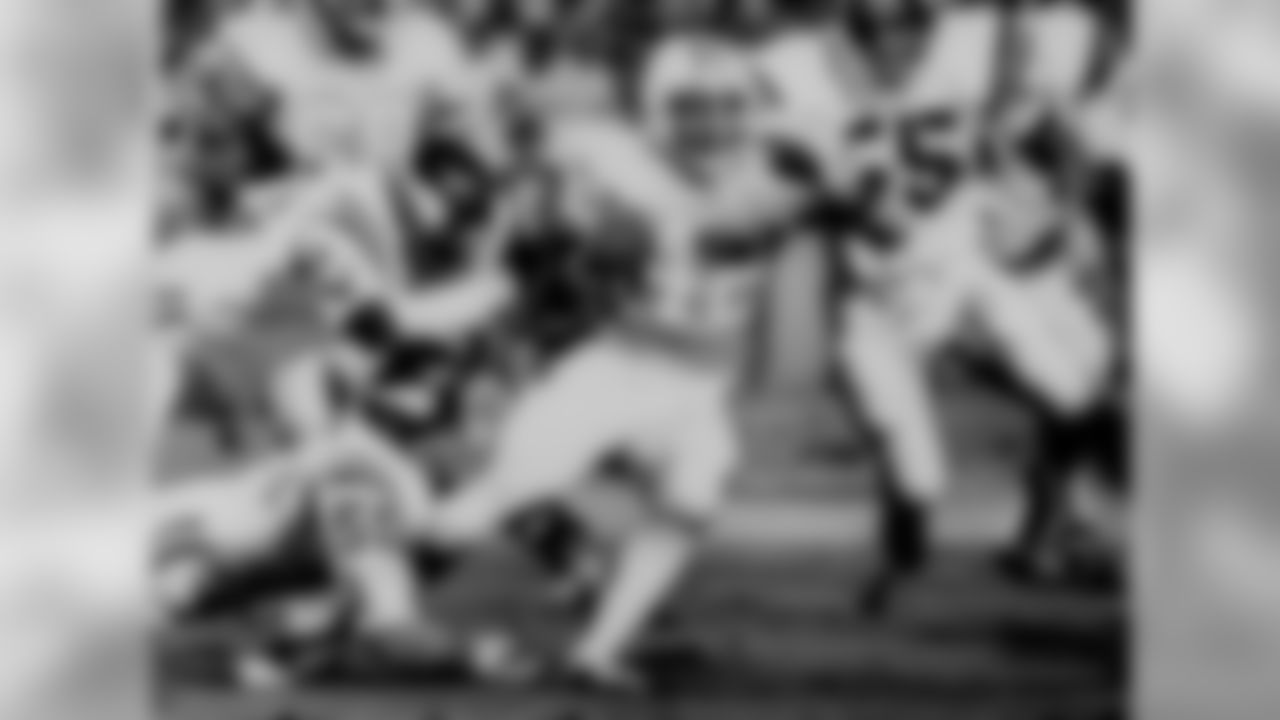
Year: 1977
College: USC
Who went No. 2? Tony Dorsett, RB, Dallas Cowboys (Pittsburgh)
Most notable player(s) from draft: Dorsett is the only future Hall of Famer selected in the 1977 draft.
Bell posted a career-high 1,263 yards and seven touchdowns rushing in 1979, the first playoff season in Buccaneers history. With Lee Roy Selmon on defense (the No. 1 overall pick in 1976) and Bell, the Buccaneers had hoped to have major contributors on both sides of the ball for years to come. Instead, Bell's career was tragically cut short. Bell passed away in 1984 due to cardiac arrest caused by illnesses from which he suffered for two years.
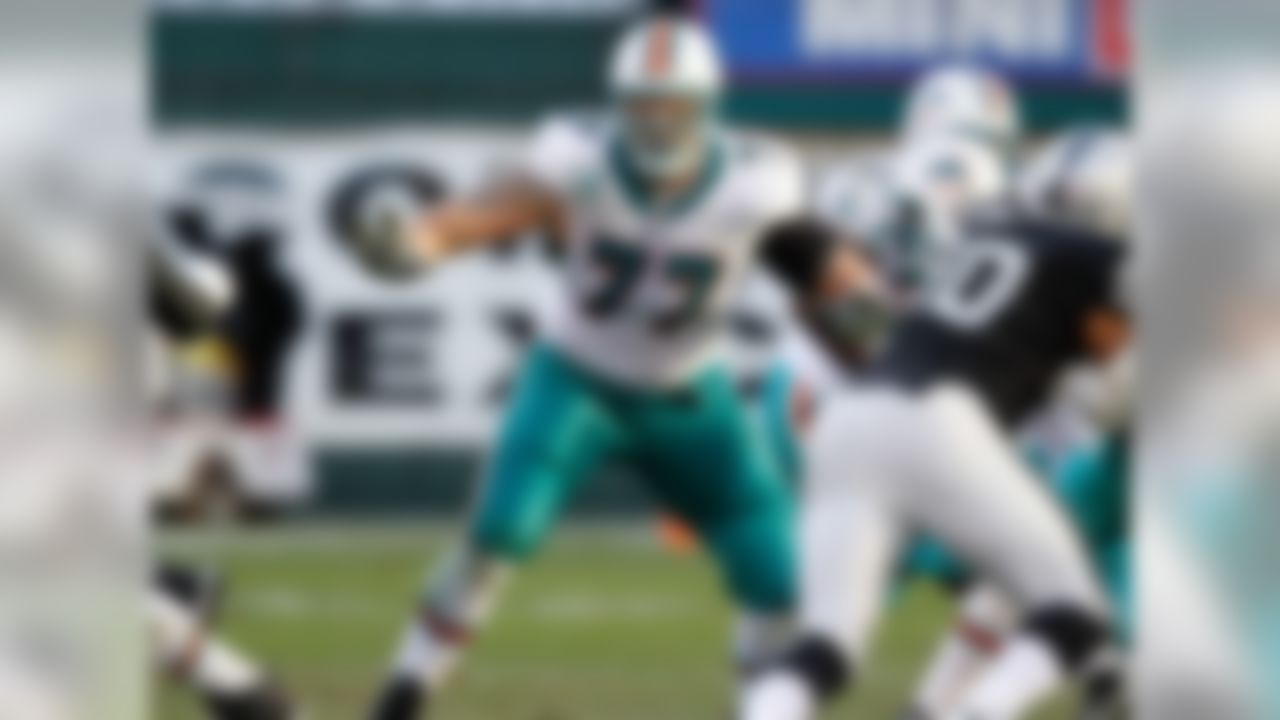
Year: 2008
College: Michigan
Who went No. 2? Chris Long, DE, St. Louis Rams (Virginia)
Most notable player(s) from draft: Jamaal Charles was taken in the third round (No. 73 overall) by the Kansas City Chiefs, and has been a prominent fixture of fantasy football draft boards ever since.
Long was a Pro Bowl selection in each of his first four NFL seasons. In the 2013 offseason, Long signed a lucrative contract with the St. Louis Rams, but lasted just two seasons with the team. Long suffered a season-ending ACL tear midway through the 2014 season. In March, he was released by the Rams in order to free up salary-cap room and has yet to latch on with another NFL team.
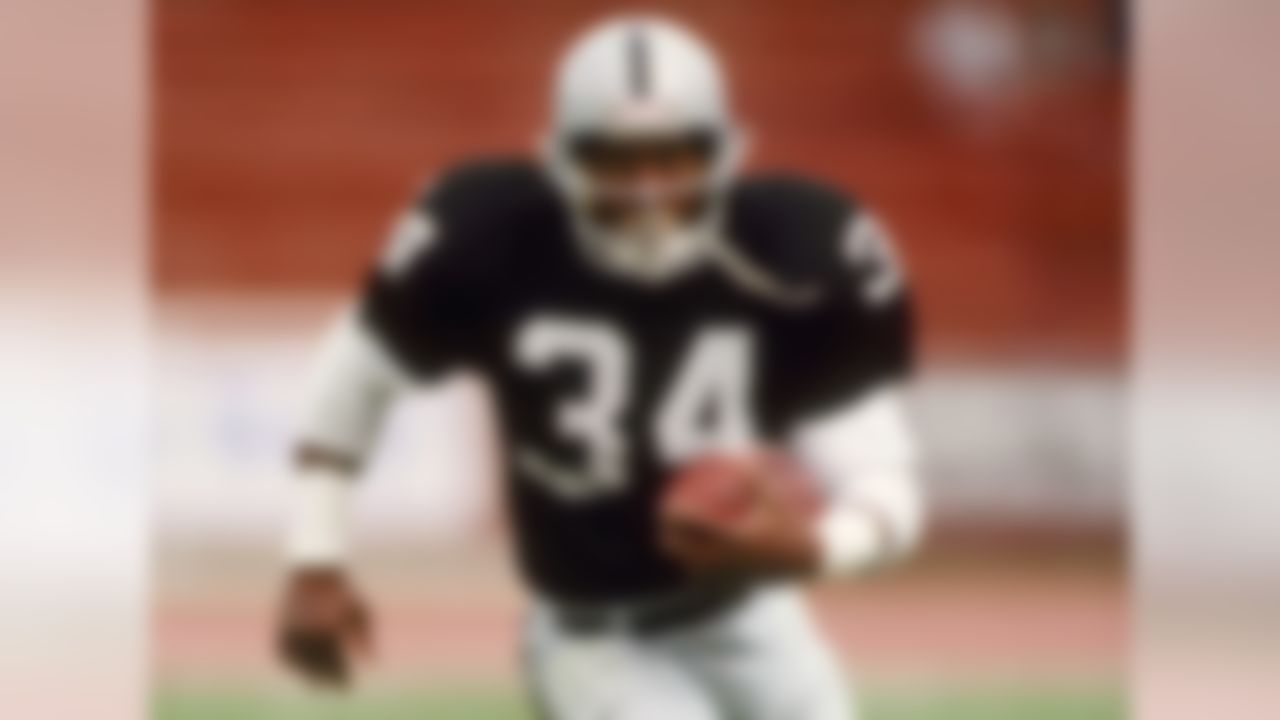
Year: 1986
College: Auburn
Who went No. 2? Tony Casillas, DT, Atlanta Falcons (Oklahoma)
Most notable player(s) from draft: Newly minted Pro Football Hall of Famer Charles Haley was selected in the fourth round (No. 96 overall) by the San Francisco 49ers. Haley, of course, went on to win five Super Bowls with the 49ers and Cowboys.
Controversy surrounded the Buccaneers' selection of Jackson, who opted to play baseball for the Kansas City Royals rather than sign with Tampa Bay. The Buccaneers forfeited his draft rights for the 1987 draft, and the Los Angeles Raiders used a seventh-round selection (No. 183 overall) to take Jackson. In his baseball offseason "hobby," Jackson was a dominant running back and became a Tecmo Super Bowl legend. Unfortunately, a hip injury cut short Jackson's promising NFL career.
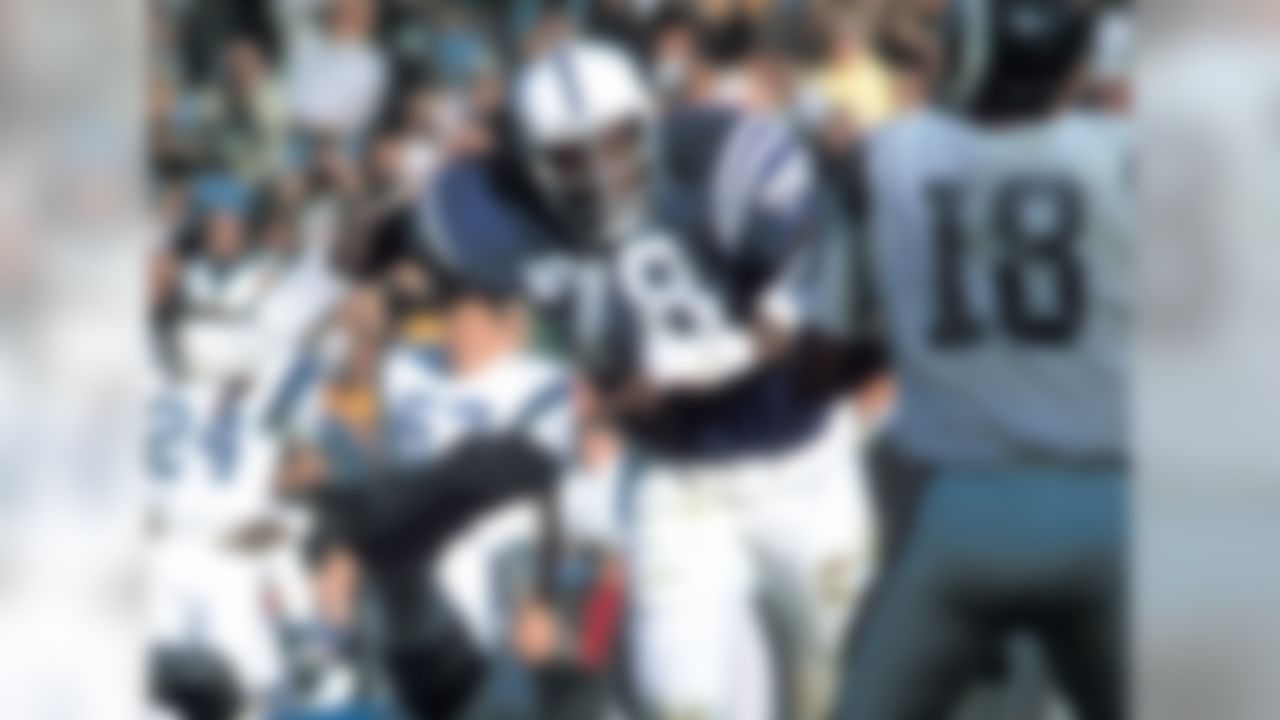
Year: 1967
College: Michigan State
Who went No. 2? Clint Jones, RB, Minnesota Vikings (Michigan State)
Most notable player(s) from draft: Seven future members of the Hall of Fame were taken in the 1967 draft: Bob Griese (No. 4 overall to the Dolphins), Floyd Little (No. 6 overall to the Broncos), Alan Page (No. 15 overall to the Vikings), Gene Upshaw (No. 17 overall to the Raiders), Lem Barney (No. 34 overall to the Lions), Willie Lanier (No. 50 overall to the Chiefs) and Rayfield Wright (No. 182 overall to the Cowboys).
Smith was a feared pass rusher -- earning two Pro Bowl nods in a brief NFL career -- but is almost as famous for his acting career as he is for his work on the football field. Smith's most memorable acting role was playing Moses Hightower in the "Police Academy" series. As a player, Smith appeared in two Super Bowls for the Baltimore Colts, including the team's Super Bowl V triumph.

Year: 1981
College: South Carolina
Who went No. 2? Lawrence Taylor, LB, New York Giants (North Carolina)
Most notable player(s) from draft: Six selections after Taylor was picked, the San Francisco 49ers took Ronnie Lott. Both are in the Pro Football Hall of Fame, and both are in the conversation of the best-ever at their respective positions.
Coming off his Heisman-winning season in 1980, Rogers led the NFL in rushing yards (1,674) in his rookie season. Rogers was the first of five Heisman winners drafted by the Saints (Danny Wuerffel, 1997; Ricky Williams, 1999; Reggie Bush, 2006; and Mark Ingram, 2011). Rogers was a member of the Redskins' Super Bowl XXII-winning team, but injuries kept him from starting. He was replaced by Timmy Smith, who famously went on to become one of the NFL's all-time one-hit wonders.
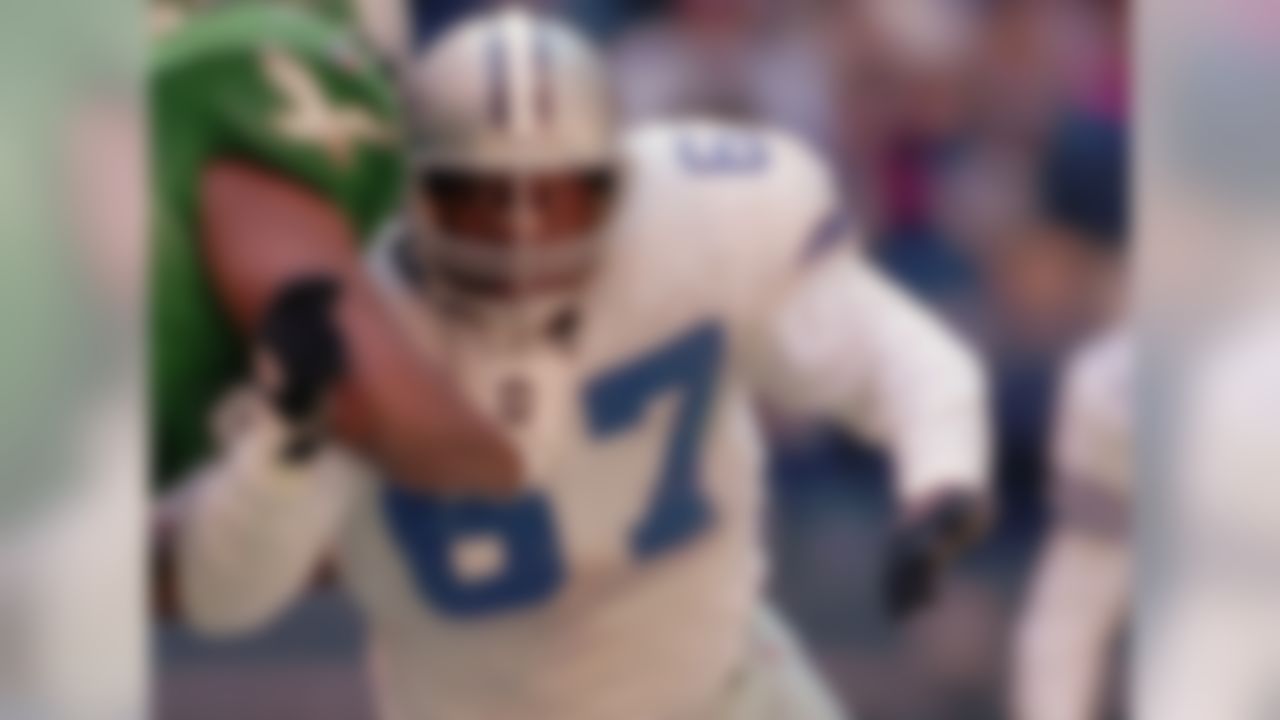
Year: 1991
College: Miami (Fla.)
Who went No. 2? Eric Turner, DB, Cleveland Browns (UCLA)
Most notable player(s) from draft: Brett Favre was selected in the second round (No. 33 overall) by the Atlanta Falcons. While Favre did little for the Falcons, he was a proficient passer of some renown during his time with the Green Bay Packers.
Maryland spent 10 seasons in the NFL, and was a vital contributor to the Cowboys when they won three Super Bowls.
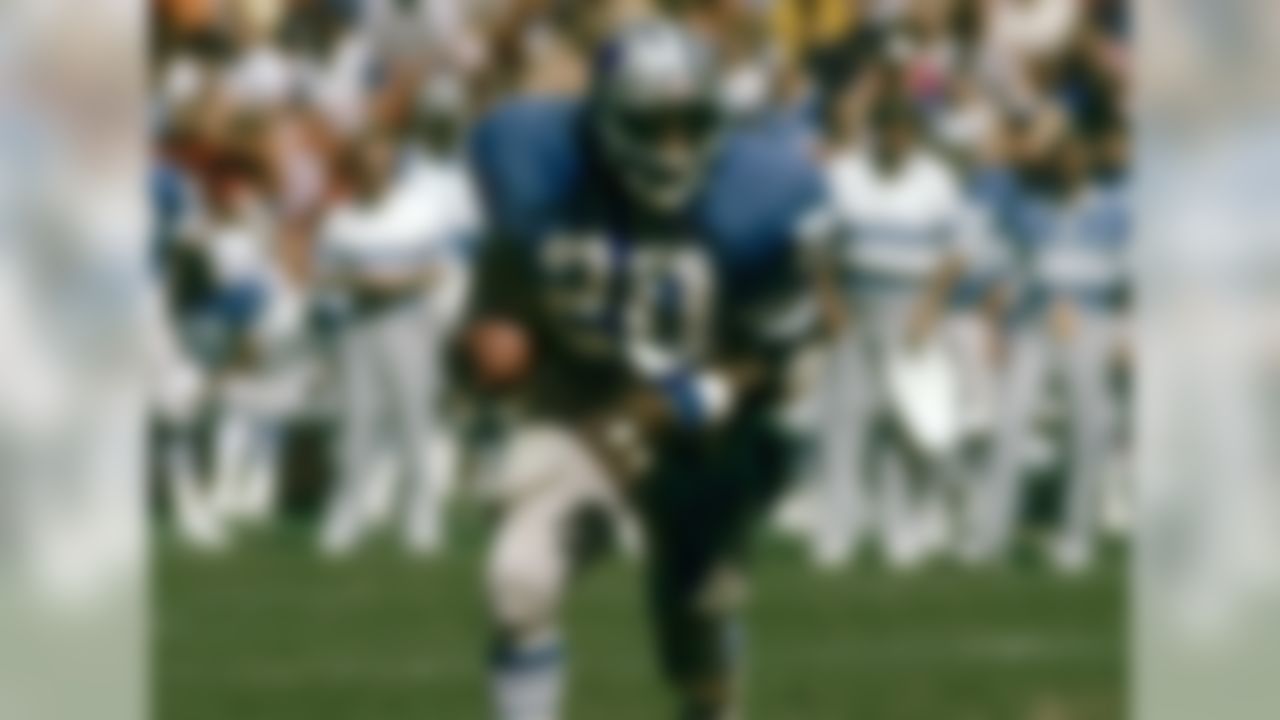
Year: 1980
College: Oklahoma
Who went No. 2? Johnny "Lam" Jones, WR, New York Jets (Texas)
Most notable player(s) from draft: Anthony Munoz -- one of the greatest offensive tackles in NFL history -- was taken with the No. 3 overall selection by the Cincinnati Bengals.
Sims' promising career was cut short in his fifth NFL season when he suffered a major knee injury in 1984. Before then, he posted three 1,000-yard rushing seasons and was a three-time Pro Bowl selection, leading the Lions to two consecutive playoff appearances (1982-83) in the process.

Year: 1984
College: Nebraska
Who went No. 2? Dean Steinkuhler, OT, Houston Oilers (Nebraska)
Most notable player(s) from draft: Boomer Esiason went in the second round to the Cincinnati Bengals. This draft marked the first time in 10 years that a quarterback was not selected in the first round (1974, Danny White in the third round to the Dallas Cowboys).
With the presence of the USFL (and that league signing many outgoing college football stars), this was not an impressive draft crop. Fryar went No. 1, becoming the first wide receiver ever to be taken in that spot. Fryar was a member of the Patriots when the team advanced to Super Bowl XX, and was a five-time Pro Bowl pick (four of those five came with teams other than the Patriots).
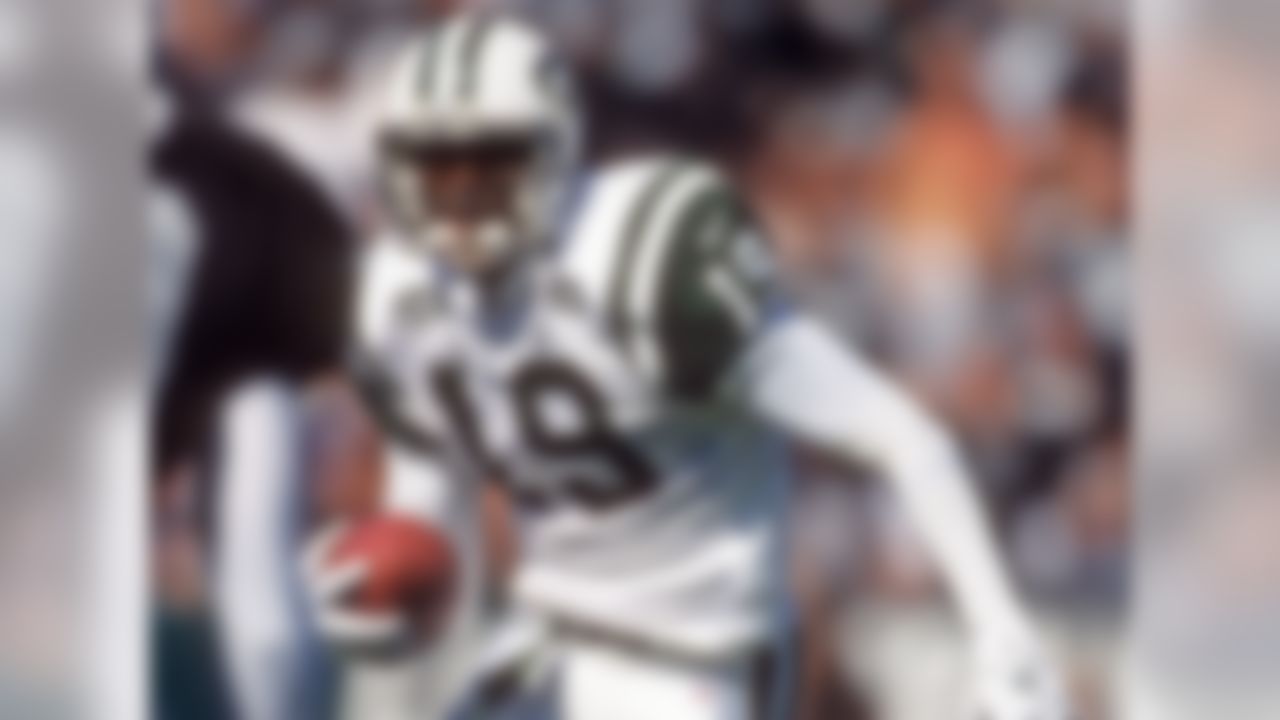
Year: 1996
College: USC
Who went No. 2? Kevin Hardy, LB, Jacksonville Jaguars (Illinois)
Most notable player(s) from draft: The Baltimore Ravens scored one of the greatest draft hauls in league history, highlighted by the first-round selections of Jonathan Ogden (No. 4 overall) and Ray Lewis (No. 26 overall).
Johnson enjoyed a productive NFL career that spanned 11 seasons with four different teams. He helped the Jets bounce back from a 1-15 disaster of a season in 1996 to advance to the AFC championship game just two seasons later. In 2002, Johnson was a member of the Buccaneers' Super Bowl XXXVII-winning team. Johnson posted four 1,000-yard receiving seasons and was a three-time Pro Bowl selection.
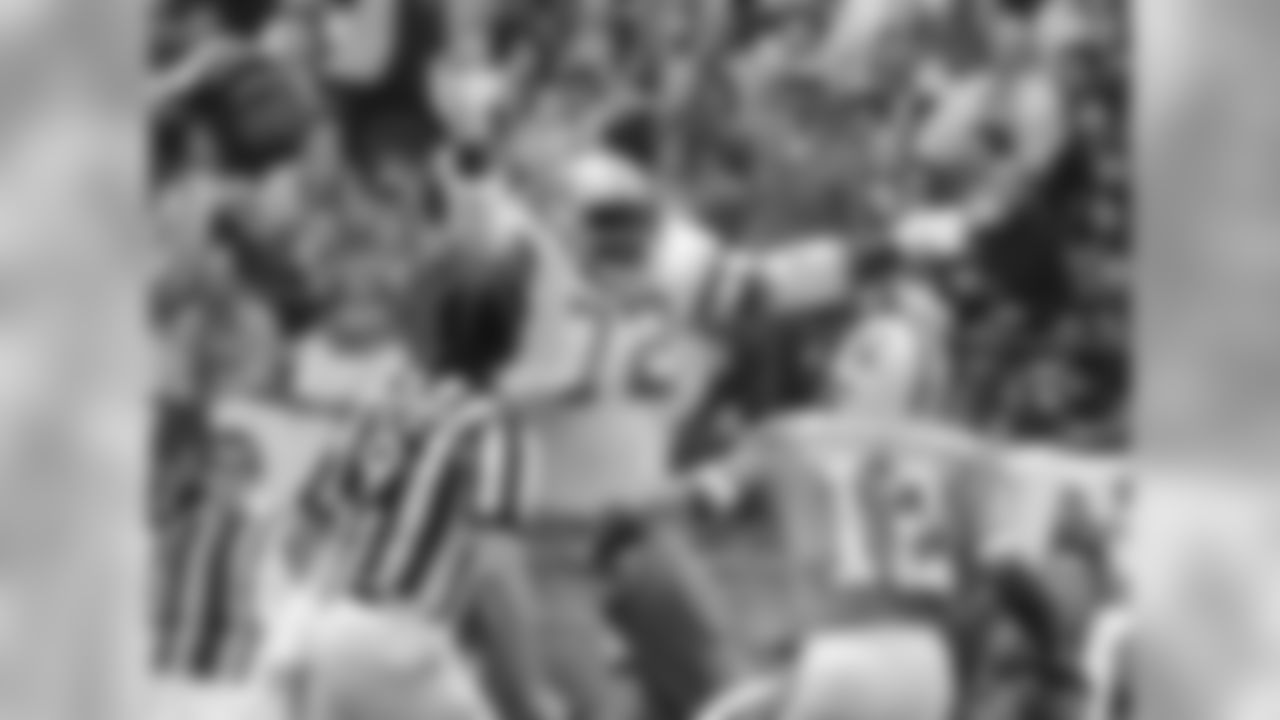
Year: 1974
College: Tennessee State
Who went No. 2? Bo Matthews, RB, San Diego Chargers
Most notable player(s) from draft: This is the draft in which the Pittsburgh Steelers famously drafted four future Hall of Famers: Lynn Swann in Round 1, Jack Lambert in Round 2, John Stallworth in Round 4 and Mike Webster in Round 5.
Jones was a vital piece of Dallas' "Doomsday Defense," earning three Pro Bowl selections. He was a member of the Cowboys' Super Bowl XII-winning team. In all, Jones played in three Super Bowls with the Cowboys. Aside from a brief hiatus to pursue a boxing career, Jones never missed a game, playing in 232 games during a 15-year NFL career.
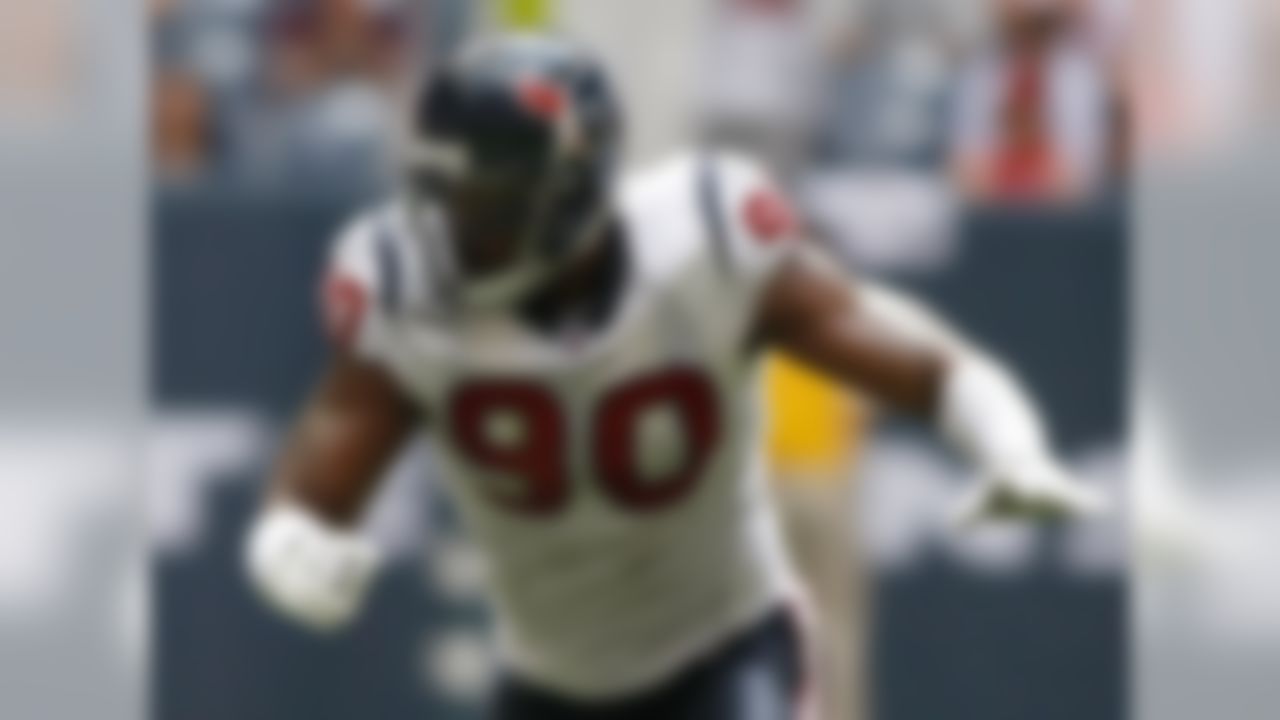
Year: 2006
College: North Carolina State
Who went No. 2? Reggie Bush, RB, New Orleans Saints (USC)
Most notable player(s) from draft: The New York Jets solidified their offensive line for years to come by spending first-round picks on D'Brickashaw Ferguson (No. 4 overall) and Nick Mangold (No. 29 overall).
The Texans took some heat for selecting Williams over Bush and in-state college star Vince Young. However, Williams developed into one of the NFL's top edge rushers, having recorded 91 sacks through nine seasons and earning four Pro Bowl nods.
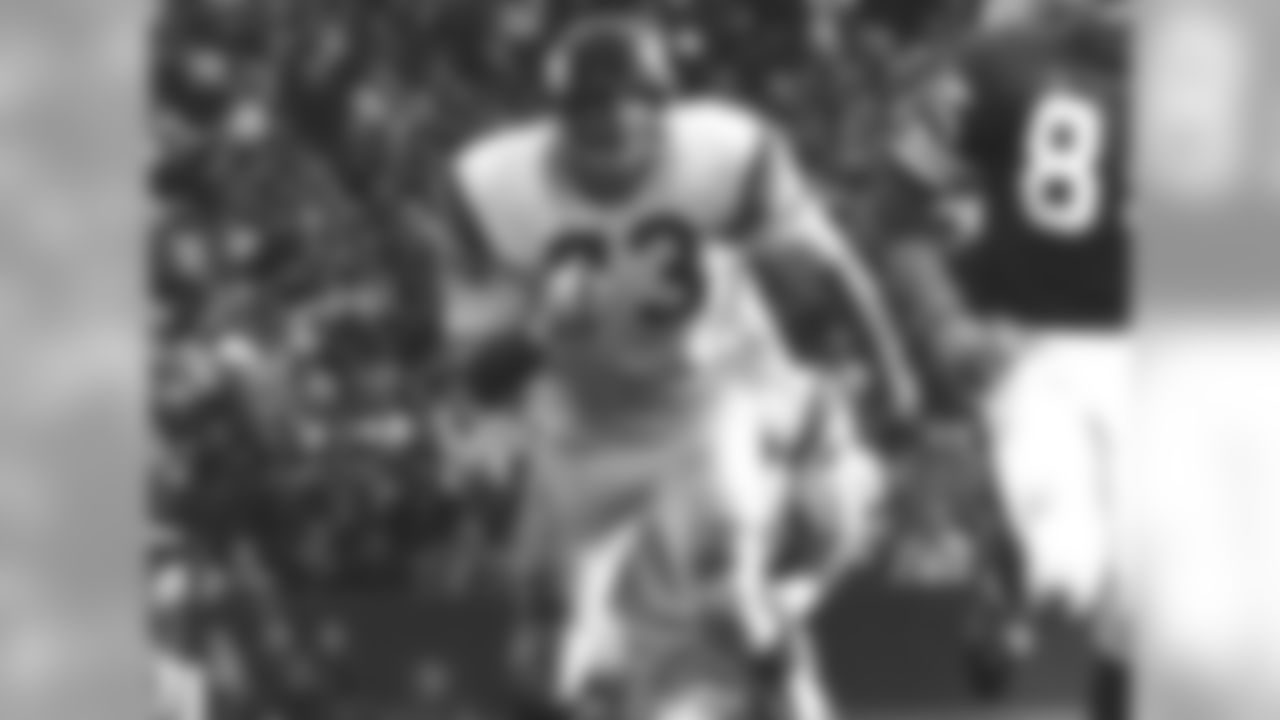
Year: 1968
College: USC
Who went No. 2? Bob Johnson, C, Cincinnati Bengals (Tennessee)
Most notable player(s) from draft: Seven future members of the Pro Football Hall of Fame were taken in the 1968 draft: Yary, Claude Humphrey (No. 3 overall to the Atlanta Falcons), Larry Csonka (No. 8 overall to the Miami Dolphins), Curley Culp (No. 31 overall to the Denver Broncos), Charlie Sanders (No. 74 overall to the Detroit Lions), Elvin Bethea (No. 77 overall to the Houston Oilers) and Art Shell (No. 80 overall to the Oakland Raiders).
Yary went on to a decorated career with the Vikings, earning seven Pro Bowl selections and was a member of all four Minnesota teams to reach the Super Bowl. After Yary's selection at No. 1 overall, it would be another 29 years before another offensive lineman would be selected No. 1 overall (Orlando Pace by the St. Louis Rams in 1997).
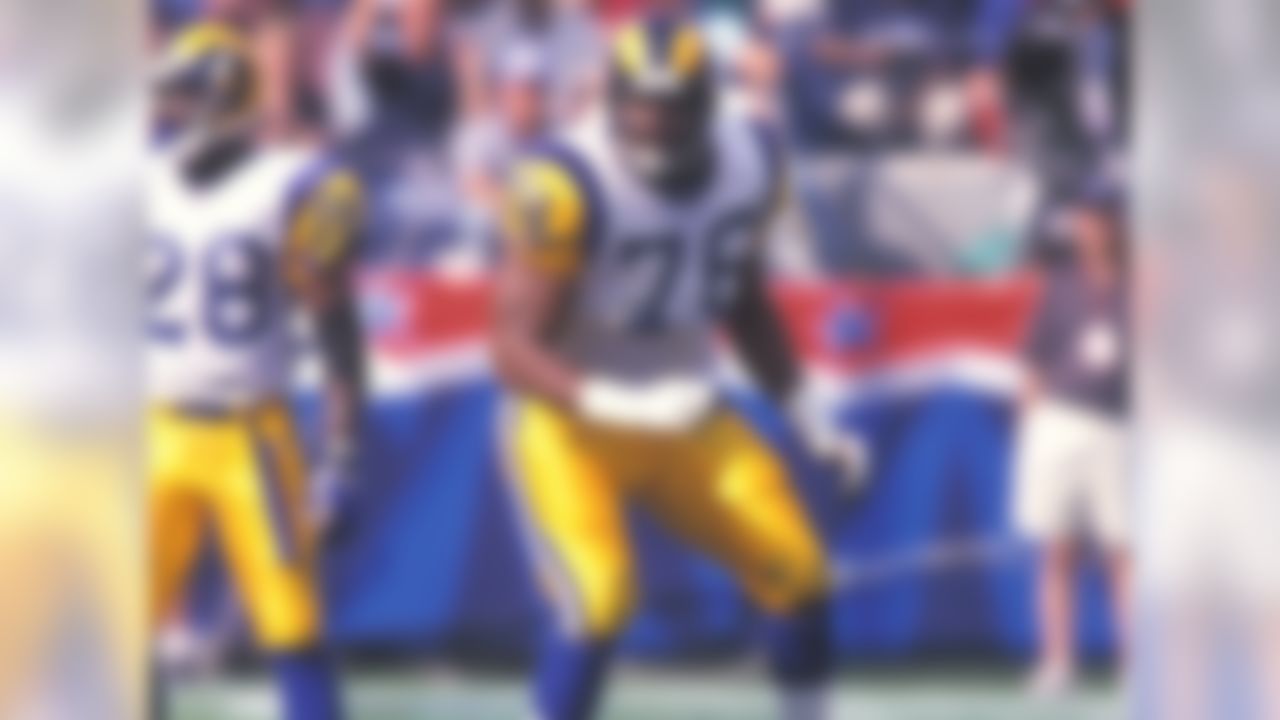
Year: 1997
College: Ohio State
Who went No. 2? Darrell Russell, DT, Oakland Raiders (USC)
Most notable player(s) from draft: Walter Jones was selected by the Seattle Seahawks in the first round (No. 6 overall) and was a 2014 inductee into the Pro Football Hall of Fame.
Pace figures to join Jones in the Hall of Busts very quickly. Pace was a vital cog in the offensive onslaught machine that was the Rams' "Greatest Show on Turf." Pace was a seven-time Pro Bowl pick and three-time All-Pro selection during a 13-year NFL career.
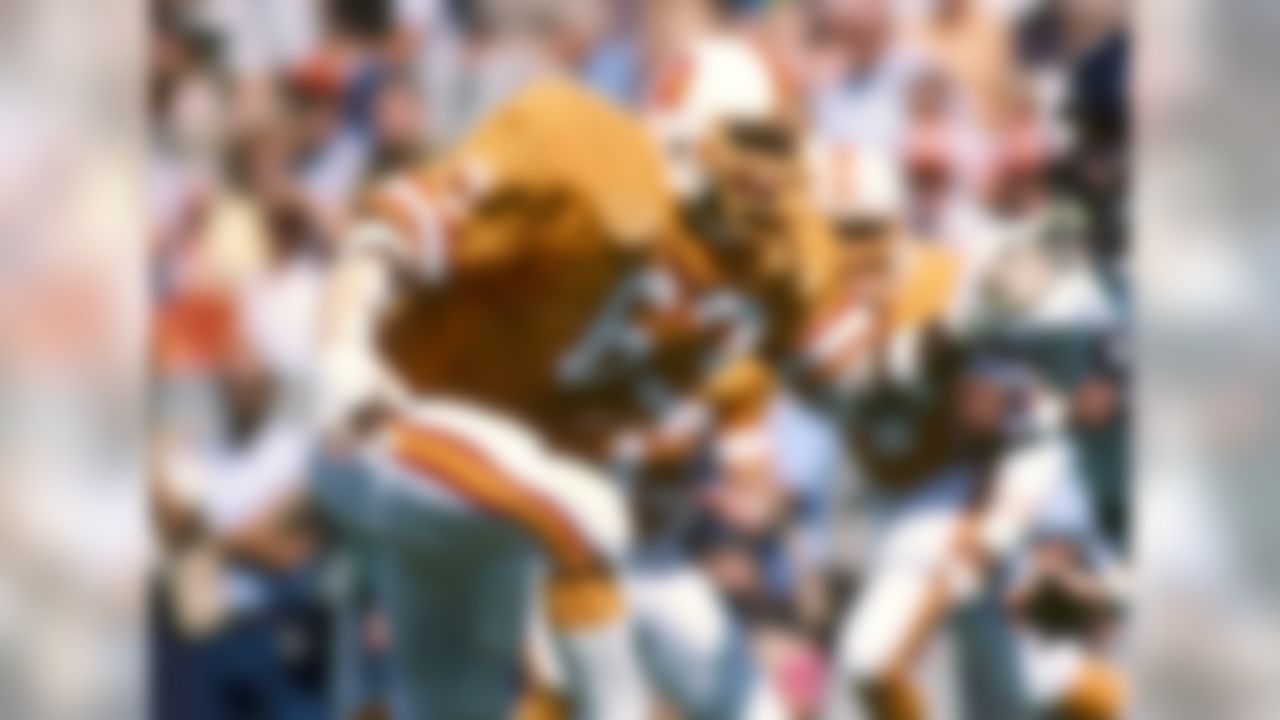
Year: 1976
College: Oklahoma
Who went No. 2? Steve Niehaus, DT, Seattle Seahawks (Notre Dame)
Most notable player(s) from draft: Selmon, who was selected four spots ahead of another future Hall of Famer, Mike Haynes (who went to the New England Patriots).
Selmon was the first draft choice in Buccaneers history, and was vital to the franchise as it rose from 0-26 laughingstock to playoff team in its fourth season of existence. During the Buccaneers' 1979 season -- in which the team reached the NFC Championship Game -- Selmon earned NFL Defensive Lineman of the Year honors.
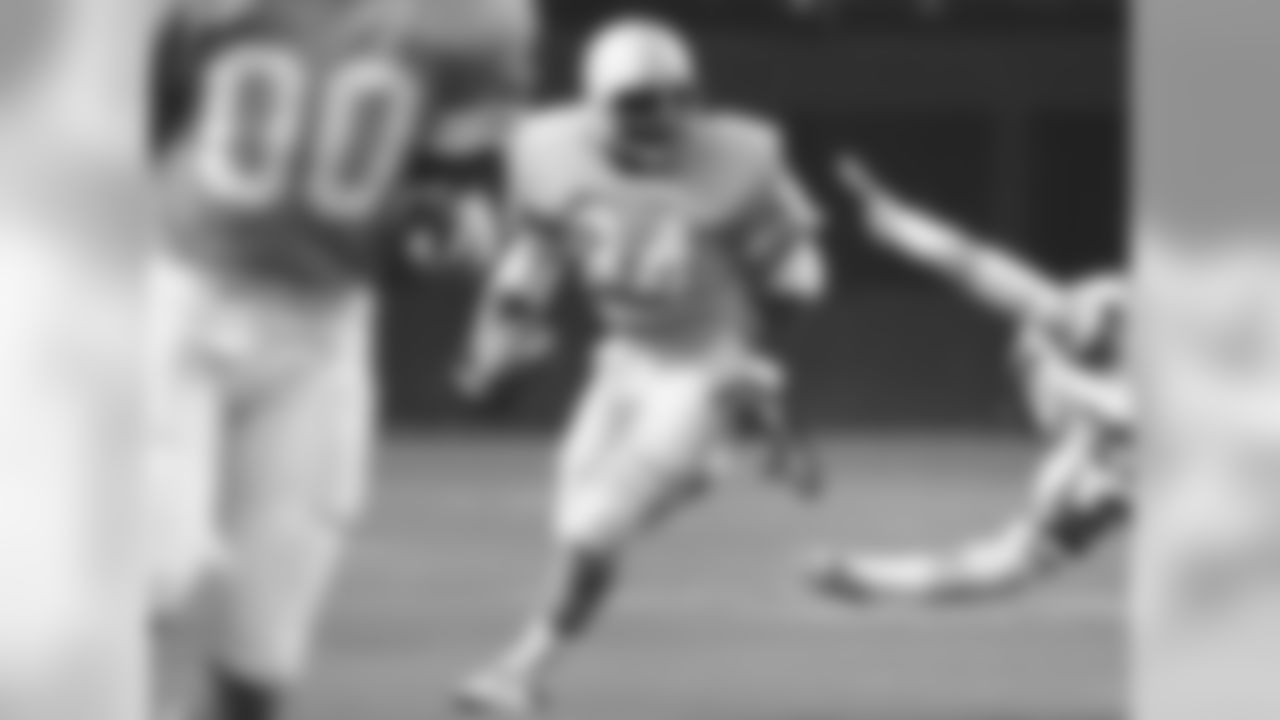
Year: 1978
College: Texas
Who went No. 2? Art Still, DE, Kansas City Chiefs (Kentucky)
Most notable player(s) from draft: Ozzie Newsome -- one of the NFL's all-time great tight ends -- went No. 23 overall to the Cleveland Browns.
The powerful Campbell was the frontman for the "Luv Ya Blue" Oilers of the late 1970s. Campbell led the NFL in rushing in his first three seasons (including a career-high 1,934 yards in 1980), was a five-time Pro Bowl selection and 1991 inductee into the Pro Football Hall of Fame.
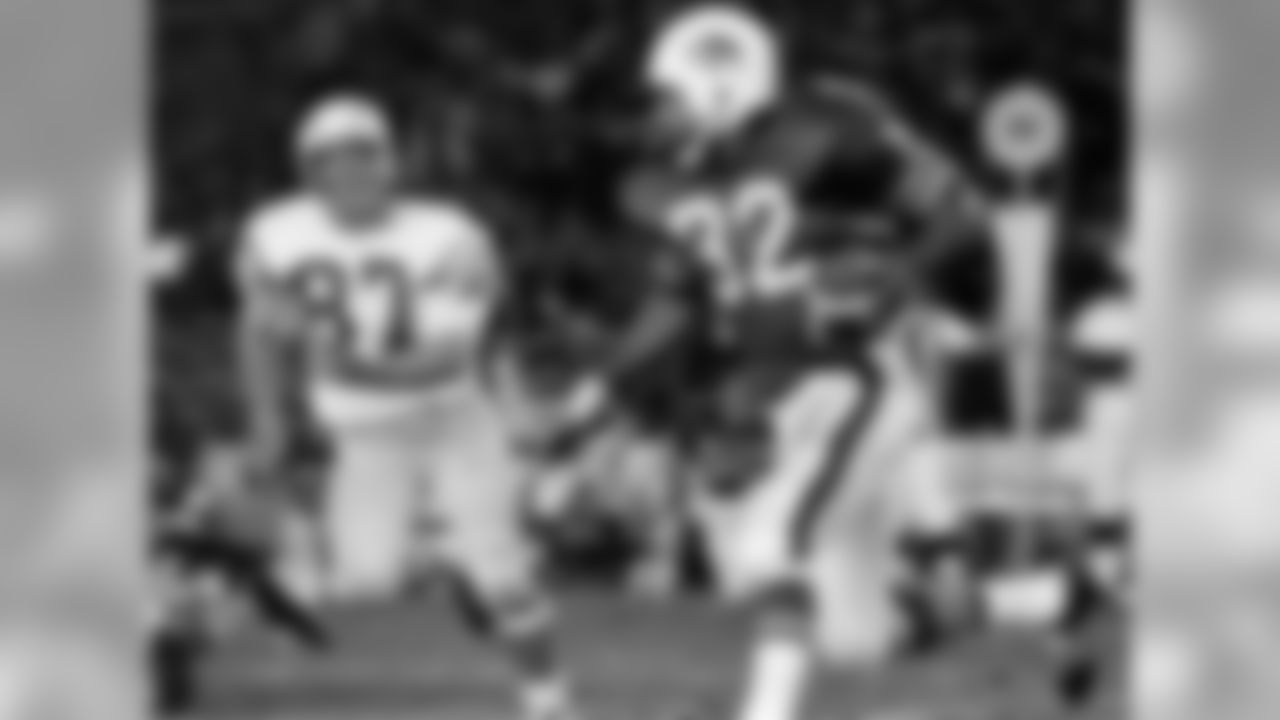
Year: 1969
College: USC
Who went No. 2? George Kunz, OT, Atlanta Falcons
Most notable player(s) from draft: "Mean" Joe Greene went fourth overall to the Pittsburgh Steelers and helped usher in a new era for a once woebegone franchise.
No player in NFL history generates more conflicting feelings than Simpson. The events of 1994 have overshadowed what was a brilliant NFL career. He was the first to rush for 2,000 yards in a single season (doing so in a 14-game schedule), and retired as the NFL's second-leading rusher of all time (behind only the incomparable Jim Brown).
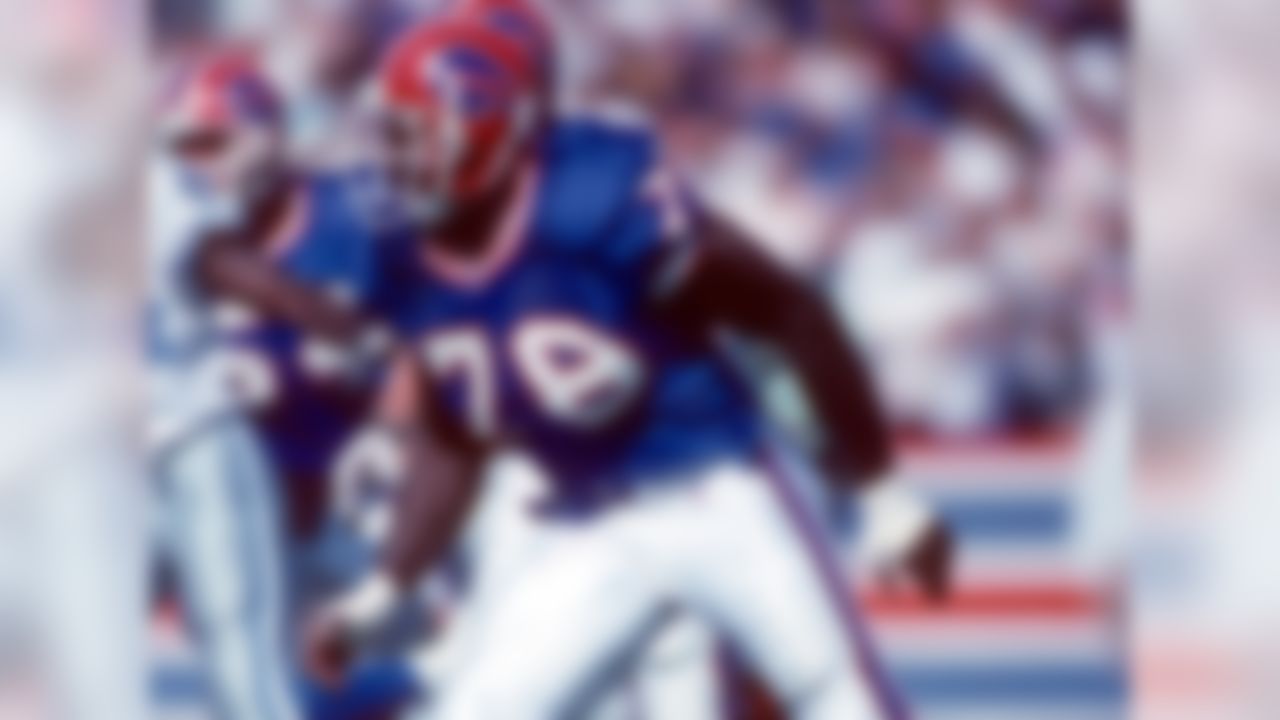
Year: 1985
College: Virginia Tech
Who went No. 2? Bill Fralic, OG, Atlanta Falcons (Pittsburgh)
Most notable player(s) from draft: Jerry Rice went No. 16 overall to the San Francisco 49ers. Three rounds after getting Smith, the Bills drafted future Hall of Fame wide receiver Andre Reed.
Smith spent 19 seasons in the NFL -- 15 with the Bills -- and registered a league-record 200 sacks. Smith was a two-time defensive player of the year and an 11-time Pro Bowl pick. His work on defense helped the Bills reach four consecutive Super Bowls.






